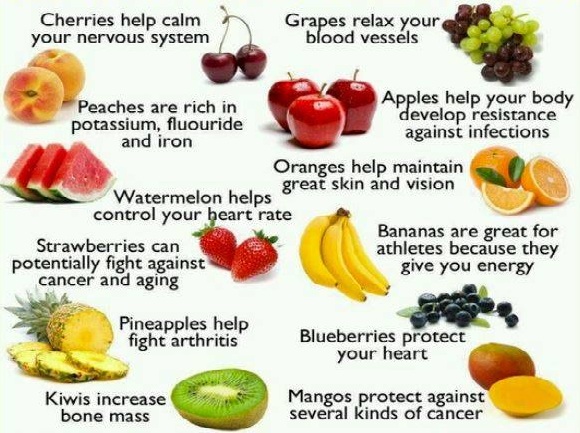Consuming a healthy, well-adjusted diet is an essential part of preserving good health, and can benefit you in many ways. To start with, it will make you feel healthy and energized. This being said, eating the right amounts of a wider variety of foods, and consuming the right amount of nutrients is important to preserve a healthy body condition. People who include more vegetables and fruits as part of an overall diet are likely to have a reduced risk of chronic diseases or obesity.
Different fruits and vegetables provide the intake of a mixture of nutrients, vitamins, and mineral, as well as other substances which are known as phytochemicals, so the color of the food can be a helpful guide for an optimal nutrition.

-
Purple/Blue
The purple and blue hues in vegetables and fruits are because of their anthocyanin content.
Anthocyanin is an antioxidant and is primary good for fighting off harmful free radicals. But that is not all, it is also good for the heart health, lowers high blood pressure and prevents blood clotting.
Good sources of it are blueberries, eggplant, prunes, plumes, blackberries, etc.
-
Green
Behind the green color of the vegetables is the natural pigment chlorophyll. Green foods are rich in isothiocyanate that encourages enzymes production in the liver which assists the body in removing toxins and harmful compounds.
Vegetables with the hue of green are a perfect source of Vitamin K, folate, potassium and omega-3 fatty acids.
Some of them are dark leafy greens, broccoli, brussels sprouts, cabbage, etc.
-
Red
The dominant pigment found in red fruits and vegetables is lycopene. Lycopene is a carotenoid which is a powerful antioxidant, related to prevention of a wide range of diseases.
Red fruits and vegetables are high in Vitamin C, folate and flavonoids that have anti-inflammatory and antioxidant properties. They also have a good amount of tannins which prevent bacteria growth in the body.
Some red fruits are tomatoes, watermelon, guava, cranberries, etc.
-
Orange/Yellow
Orange/Yellow group of foods are representing Vitamin C and beta-cryptoxanthin, beta-carotene. All of these compounds are very good antioxidants.
They can convert in the body into a Vitamin A- a vital nutrient for immune function, vision, bone and skin health.
Orange/Yellow fruits and vegetables have anti-inflammatory properties, provide good protection from various inflammations and help regulate blood sugar levels.
Fine sources of these antioxidants are pumpkin, carrots, apricots, mango, squash, etc.
